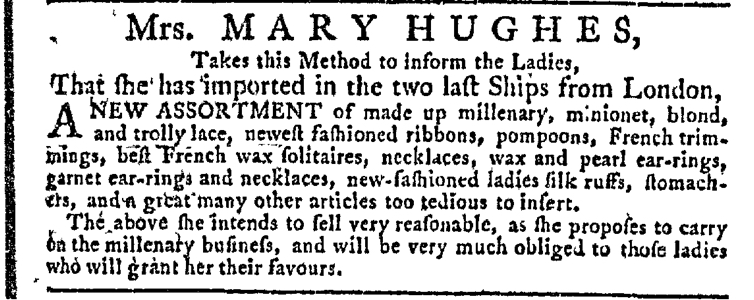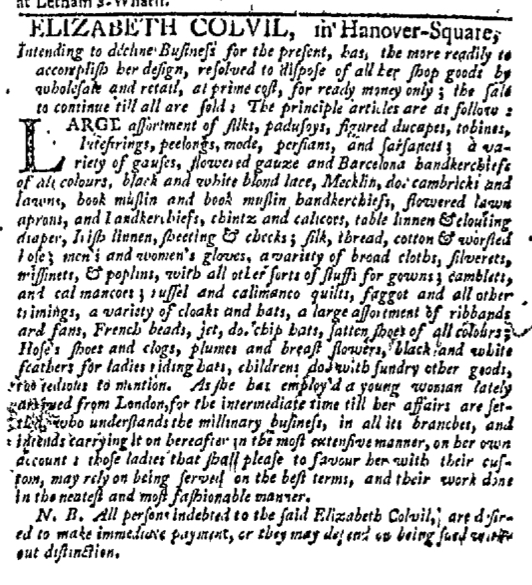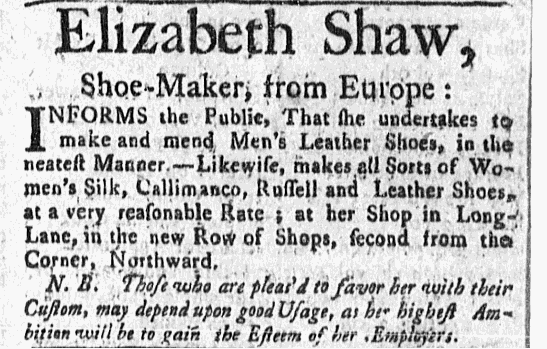
The English Parliament passes the Post Office Act which sets a postal system for the American colonies controlled by the postmaster general of London and his deputy in New York City.
New York forbids blacks, Indians, and mulattos from walking at night without lighted lanterns.
Rhode Island prohibits the clandestine importation of male & female black and Indian slaves. (See this blog for more information of enslaved women in the 18th century.)
1711-13
Tuscarora Indian War in North and South Carolina. Hostilities break out between Native Americans and settlers in North Carolina after the massacre of male & female settlers there.
1712
The Carolina colony is officially divided into North Carolina and South Carolina.
Charles II's Grant of New England to the Duke of York, 1676 - Exemplified by Queen Anne; October 30
The Pennsylvania assembly bans the import of male & female slaves into that colony.
In Massachusetts, the first sperm whale is captured at sea by an American from Nantucket.
Grace Smith writes The Dying Mothers Legacy: Or the Good and Heavenly Counsel of that Eminent and Pious Matron, Mrs. Grace Smith, late Widow to Mr. Ralph Smith of Eastham in New-England. Left as a Perpetual Monitor to Her Surviving Children; As It Was Taken from Her Own Mouth a Little Before Her Death, by the Minister From that Town Where She Died. Boston, Printed and sold by Timothy Green, at the lower-end of Middle-Street, 1712
An alleged slave revolt in New York City leads to violent outbreaks. Nine whites are killed and eighteen slaves are executed.
New York declares it illegal for male & female blacks, Indians, and slaves to murder other blacks, Indians, and slaves. And New York forbids freed blacks, Indians, and mulatto slaves from owning real estate and holding property.
In Charleston, South Carolina male & female slaves are forbidden from hiring themselves out.
1713
England's South Sea Company is allowed to transport 4,800 male & female slaves per year into the Spanish colonies of North America.
Queen Anne's War ends with the Treaty of Utrecht.
1714
George I becomes king of England (r. 1714–27).
Tea is introduced for the first time into the American Colonies.
 1715 Artist: Henrietta Johnson 1674-1729. Subject: Mary Magdalen Gendron, Mrs Samuel Prioleu 1691-1765
1715 Artist: Henrietta Johnson 1674-1729. Subject: Mary Magdalen Gendron, Mrs Samuel Prioleu 1691-1765 1715
Yamasee tribes attack and kill several hundred male & female Carolina settlers.
Rhode Island legalizes slavery.
Maryland declares all slaves entering the province and their descendants to be slaves for life.
1716
South Carolina settlers and their Cherokee allies attack and defeat the Yamassee.
The first group of black slaves is brought to the Louisiana territory.
 1717-18 Artist: Henrietta Johnston 1674-1729. Mary Griffith (Mrs Robert Brewton, Mrs William Loughton) 1698-1761
1717-18 Artist: Henrietta Johnston 1674-1729. Mary Griffith (Mrs Robert Brewton, Mrs William Loughton) 1698-1761New York enacts a fugitive slave law.
1718
French found New Orleans.
North Carolina’s first free school, endowed by the Society for the Propagation of the Gospel, opens at Bath.
 1719 Artist: Henrietta Johnston 1674-1729. Subject: Judith DuBose (Mrs Joseph Wragg) 1698-1769.
1719 Artist: Henrietta Johnston 1674-1729. Subject: Judith DuBose (Mrs Joseph Wragg) 1698-1769. 1719-41
The American Weekly Mercury is the first newspaper launched in Philadelphia by Andrew Bradford (1686-1742). It would publish six of Franklin's "Busy-Body Papers" in 1729 and continue publication until 1746.
The Boston Gazette is the second newspaper in Boston is launched by William Brooker (fl. 1715-1720) and printed by Benjamin Franklin's older half-brother, James Franklin (1697-1735). The paper would become the official organ of the government and continue until 1741.
 1720 Attributed to Gerrit or Gerardus Duyckinck Subject: Portrait of a Lady
1720 Attributed to Gerrit or Gerardus Duyckinck Subject: Portrait of a Lady  1720 Artist: Gerardus Duyckinck 1695-1746. Subject: Mrs Johannes van Braght b 1673. Her husband was an alderman for the City of New York.
1720 Artist: Gerardus Duyckinck 1695-1746. Subject: Mrs Johannes van Braght b 1673. Her husband was an alderman for the City of New York. 1720
Estimated population of colonies: 475,000. Including Boston (pop. 12,000), Philadelphia (pop. 10,000), and New York (pop. 7000).
A smallpox epidemic in Boston prompts Cotton Mather and Zabdiel Boylston to experiment with inoculation against the disease. Mather had learned of the practice from Onesimus, his slave, who had himself been inoculated as a child and knew inoculation to be a widely accepted medical practice in Africa.
 1720-25 Attributed to Schuyler Limner (active ca. 1715–1725) Portrait of a Lady (possibly Tryntje Otten Veeder)
1720-25 Attributed to Schuyler Limner (active ca. 1715–1725) Portrait of a Lady (possibly Tryntje Otten Veeder) Benjamin Franklin leaves Boston for Philadelphia, a trip that he chronicles in his Autobiography.
South Carolina planters settle along the Lower Cape Fear River and begin developing the rice and naval stores industries. They bring large numbers of enslaved people and establish a large, plantation-style slave system.
Virginia abolishes manumissions.
.jpg) 1720-28 Artist: Gerardus Duyckinck 1695-1746 Subject: Grace Mears, Mrs Moses Levy
1720-28 Artist: Gerardus Duyckinck 1695-1746 Subject: Grace Mears, Mrs Moses Levy1724
The French build forts on the Mississippi, the St. Lawrence, and the Niagara rivers.
French Louisiana prohibits slaves from marrying without the permission of their owners.
The population of male & female black slaves in the American colonies reaches 75,000.
Riots occur in Philadelphia as poor people tear down the pillories and stocks and burn them.
 1725 Artist: Charles Bridges 1670-1747. Subject: Evelyn(1708-1737) daughter of William Byrd II and Lucy Parke.
1725 Artist: Charles Bridges 1670-1747. Subject: Evelyn(1708-1737) daughter of William Byrd II and Lucy Parke. 1725
Explanatory Charter of Massachusetts Bay; August 26
1726
Zabdiel Boylston: An Historical Account of the Smallpox Inoculated in New England. Boylston details his experiments with smallpox inoculation in Boston, in which only 6 of his 244 patients die of the disease. This figure compared with the 844 out of 5,757 Bostonians who died of smallpox naturally during the same epidemic. One of the first of its kind written by an American physician.
 1727 John Smibert 1688 - 1751. Eleanor Nightengale
1727 John Smibert 1688 - 1751. Eleanor Nightengale 1727
George II becomes king of England
Benjamin Franklin founds the Junto Club.
Cadwallader Colden (1688-1776): History of the Five Nations. Colden's greatest achievement is this tribal history of the Iroquois Indians based on firsthand observation.
1728
Elizabeth Hanson (1684-1737) writes God's Mercy Surmounting Man's Cruelty, a polished literary account of Hanson's 1724 capture by the French and Indians. (See Hanson's account on this blog.)
Jewish colonists in New York City build the first American synagogue.
 1729 Artist: John Smibert 1688-1751. Subject: Mrs. Tyng.
1729 Artist: John Smibert 1688-1751. Subject: Mrs. Tyng. 1729
Benjamin Franklin prints, publishes and largely writes the weekly Pennsylvania Gazette.
See Burt, Daniel S., editor. THE CHRONOLOGY OF AMERICAN LITERATURE: AMERICA'S LITERARY ACHIEVEMENTS FROM THE COLONIAL ERA TO MODERN TIMES. Houghton Mifflin Internet.
Yale Law School, The Avalon Project: Documents in Law, History, and Diplomacy. New Haven, CT.
HISTORY MATTERS. American Social History Project / Center for Media and Learning (Graduate Center, CUNY) and the Center for History and New Media (George Mason University)



+Sara+Gansevoort+(1718-1731).jpg)

+Mrs+Thomas+Jones.jpg)

+Ann+&+Sarah+Gordon.jpg)
.jpg) 1755 John Wollaston (American artist, 1710-1775). Detail Elizabeth Page & Mann Page, children of Mann & Ann Corbin (Tayloe) Page of Rosewell, Gloucester County, with bird.
1755 John Wollaston (American artist, 1710-1775). Detail Elizabeth Page & Mann Page, children of Mann & Ann Corbin (Tayloe) Page of Rosewell, Gloucester County, with bird.
+Mary+&+Elizabeth+Royall+with+dog+and+bird.jpg)
 1760 Joseph Badger (American artist, 1708-1765). James Badger with bird.
1760 Joseph Badger (American artist, 1708-1765). James Badger with bird. 
+Phil+Acad+of+Fine+Arts+2.jpg) 1763-65 Henry Benbridge (American artist, 1743-1812). Detail of Gordon Family with bird.
1763-65 Henry Benbridge (American artist, 1743-1812). Detail of Gordon Family with bird. 
.jpg)
.Young+Lady+with+a+Bird+and+Dog+1767.jpg)









_+Jerusha+Benedict+(Ives).jpg)
















 1793 Ralph Earl (1751-1801). Sarah McCurdy (Mrs. Henry Channing) and Son Henry William
1793 Ralph Earl (1751-1801). Sarah McCurdy (Mrs. Henry Channing) and Son Henry William